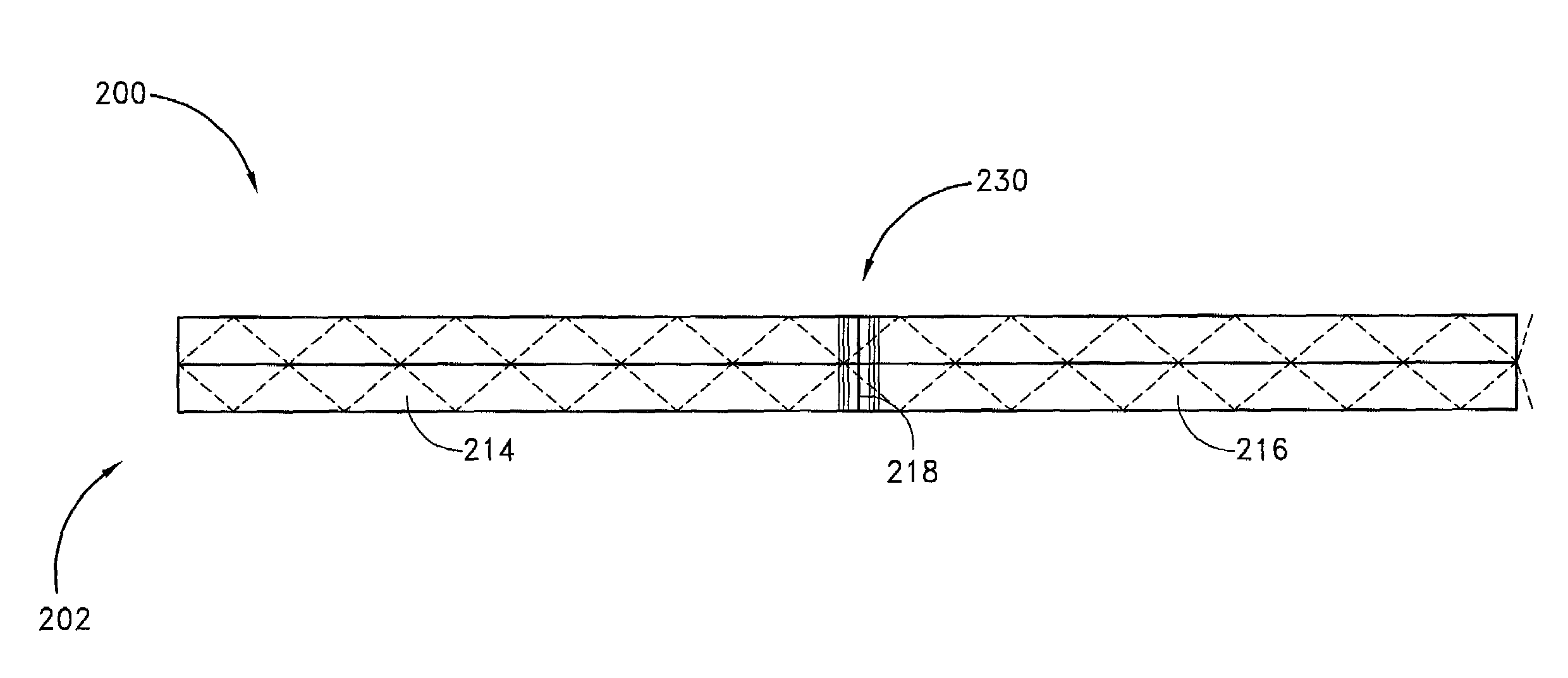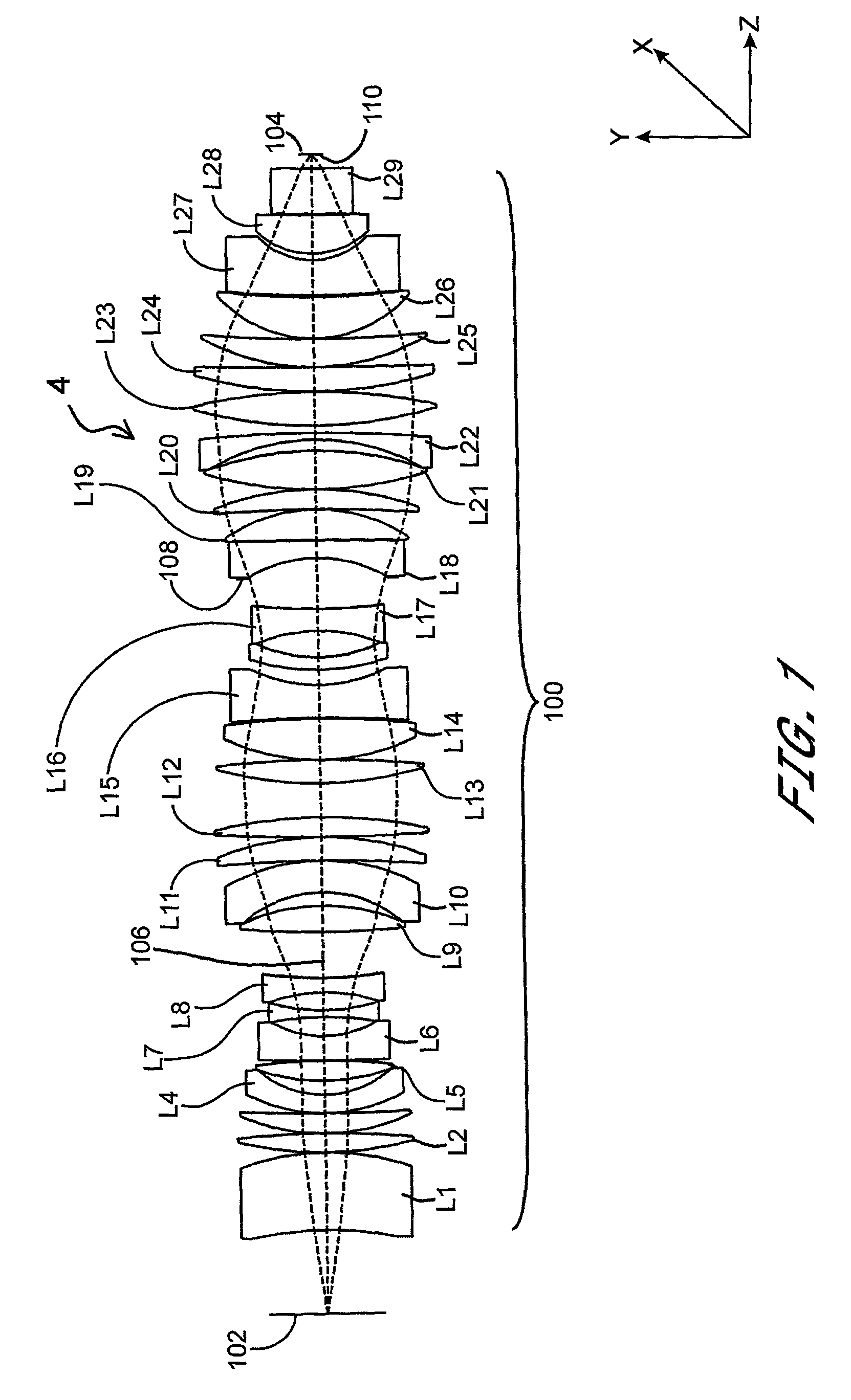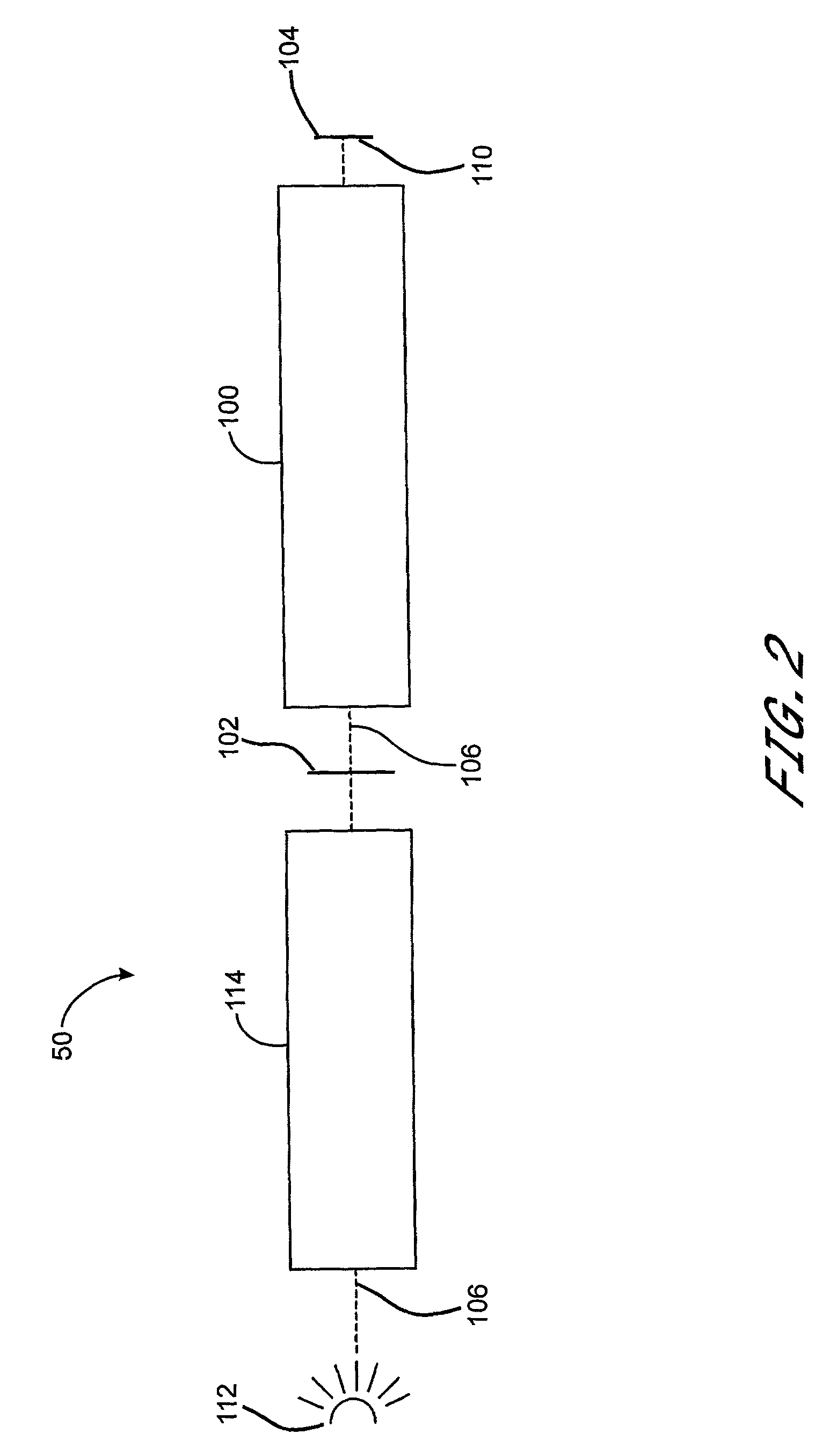Structures and methods for reducing aberration in optical systems
- Summary
- Abstract
- Description
- Claims
- Application Information
AI Technical Summary
Benefits of technology
Problems solved by technology
Method used
Image
Examples
example 1
[0131]FIG. 6 shows an exemplary optical system 160 usable for lithographic applications that is based on a Dyson catadioptric lens comprising a single refractive element 162 and single reflective element 164 aligned along an optical axis 165 [Refs. J. Dyson, “Unit magnification optical system without Seidel aberrations,” J. Opt. Soc. Am., Vol. 49, p. 713 (1959), as described in R. Kingslake, Lens Design Fundamentals, Academic Press, Inc. (1978)] In one preferred embodiment, the refractive optical element comprises cubic crystalline material. This refractive element 162 has first planar surface 166 and second curved surface 168. The reflective element 164 also has a curved reflective surface 170.
[0132]A notable feature of the Dyson design is that the object and image fields 172, 174 are coplanar and located at the center of curvature, C, of the curved surfaces on the refractive and reflective elements 160 and 162. Preferably, the radius of curvature, R1, of the refractive element 162...
example 2
[0157]A mixing rod, also referred to as a homogenizer or kaleidoscope, is commonly used in illumination systems for photolithography. FIG. 12 shows an exemplary mixing rod 200 comprising calcium fluoride and having dimensions of 10×10×160 millimeters (mm). The mixing rod 200 is assumed to have a birefringence magnitude, ne−no, of −12×10−7 corresponding to the intrinsic birefringence of calcium fluoride measured at a wavelength of 157 nanometers (nm) as suggested in D. Krahmer, “Intrinsic Birefringence in CaF2,” at Calcium Fluoride Birefringence Workshop, Intl. SEMATECH, July 31, 2001. The mixing rod 200 has proximal and distal ends 202, 204 and an input and output faces or ports 206, 208 for inputting and outputting the beam and walls 210 on opposite sides for reflecting the beam propagating therethrough. An optical axis 212 extends the length of the mixing rod 200. The mixing rod 200 can be separated into two portions 214, 216, preferably of equal length, and more preferably having...
example 3
[0170]These techniques for reducing polarization aberrations caused by intrinsic birefringence are particularly well suited for providing wavefront correction of refractive imaging systems used for photolithography. In addition to the rigorous performance requirements associated with this application, photolithography lenses often include a large number of refractive optical elements, which together possess a significant amount of birefringence. Wavefront error caused by retardation aberrations can therefore substantially limit the resultant resolution obtained by the photolithographic projection system. An exemplary projection lens 100, one which contains all optically transmissive and, in particular, all refractive, powered, optical elements L1-L29 is illustrated in FIG. 1. A similar lens is provided in European Patent Application No. 0 828 172 by S. Kudo and Y. Suenaga, the contents of which are herein incorporated by reference. This optical system 100 is designed to operate at a...
PUM
 Login to View More
Login to View More Abstract
Description
Claims
Application Information
 Login to View More
Login to View More - R&D
- Intellectual Property
- Life Sciences
- Materials
- Tech Scout
- Unparalleled Data Quality
- Higher Quality Content
- 60% Fewer Hallucinations
Browse by: Latest US Patents, China's latest patents, Technical Efficacy Thesaurus, Application Domain, Technology Topic, Popular Technical Reports.
© 2025 PatSnap. All rights reserved.Legal|Privacy policy|Modern Slavery Act Transparency Statement|Sitemap|About US| Contact US: help@patsnap.com



